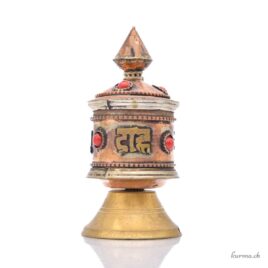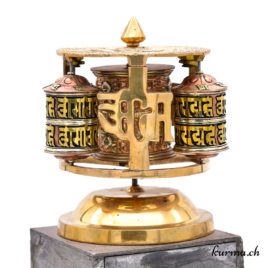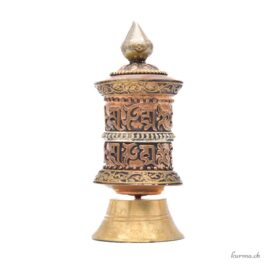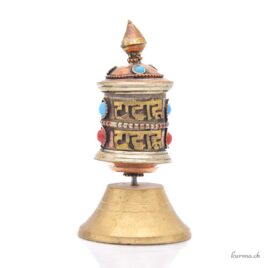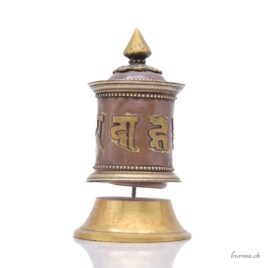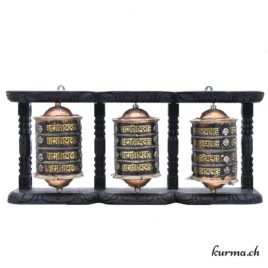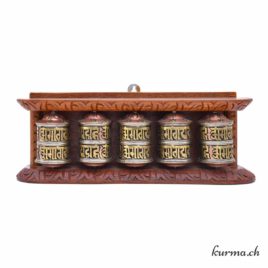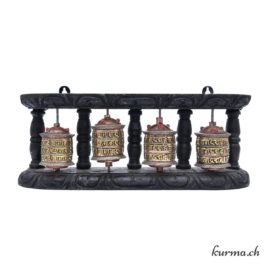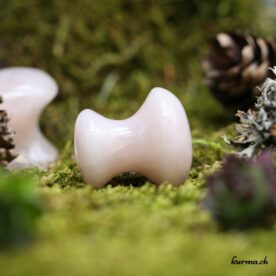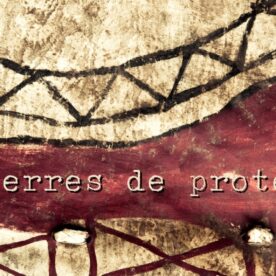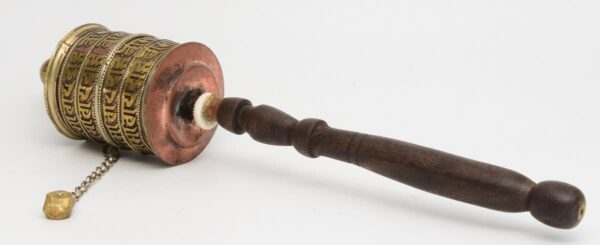
The symbolism of windmills
Tibetan prayer wheels are an integral part of Buddhist culture and are used daily to broadcast and radiate prayers.
This magnificent object of worship takes the form of a cylinder (symbolically: Wheel) revolving around a central axis (symbolically: Tree of Life). Inside, a long cloth or paper scroll covered with mantra (prayers) is wound around the central axis. The cylinder may or may not be adorned with painted or engraved mantras and other decorations.
Mill types
From the giant mill inside a temple, to the series of mills hanging along a wall, to the small portable mill, there are mills of all sizes and kinds. Some are richly and finely decorated, while others have a rougher appearance. Most are made of wood or metal.
While most mills are hand-powered, there are also some that run on wind, water or electricity.
Traditionally, prayer wheels are turned clockwise so that the mantra is read and broadcast in the direction in which it was written (except for Bönpo prayer wheels, which are counter-clockwise).
Its rotation spreads the prayers contained inside and outside the mill far and wide and positively influences its surroundings. It is said that turning a mill once is equivalent to reciting sacred formulas for several hours.
According to popular belief, turning a prayer wheel wards off bad luck, evil spirits and illness and brings peace and prosperity.
Symbolically, its rotation is the movement of the sun and the cycle of Life, the cycle of perpetual rebirth, the wheel of Dharma and carries the teaching of the path to Enlightenment.
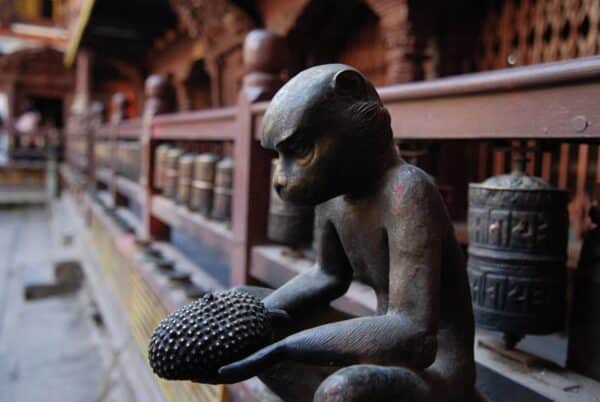
Meaning of Tibetan prayer wheels
The prayer wheel (called Mani chuskor) refers to the Buddhist expression "turning the wheel of Dharma" (wheel of teaching, wheel of the cycles of life). This is in fact the Buddha's main doctrine, mentioned in ancient texts about the meeting between the future Buddha Shakyamuni and Buddha Dipankara. Shakyamuni made an offering to Dipankara with the wish to become an enlightened being for the good of his fellow human beings.
Dipankara then told him of a secret teaching: "the wheel of Dharma" leading to the path of enlightenment, which he had entrusted to the Nagas (sacred serpents).
The secret of the Dharma wheel or prayer wheel was guarded by these celestial creatures for millions of years before mankind was able to benefit from this means of attaining enlightenment.
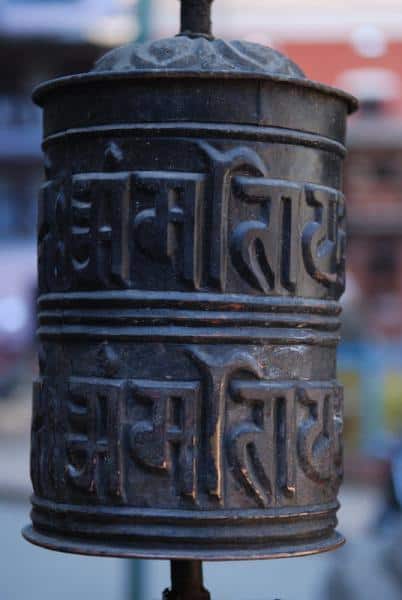
Mills in the online store
Reproduction in whole or in part of this content is prohibited. More info

